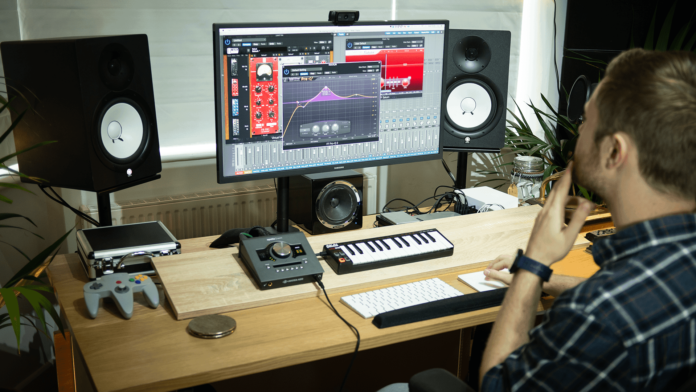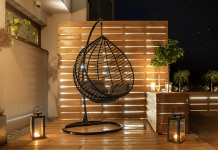Setting up your home studio for recording isn’t just a job for experts or professionals, especially if you have the finest help. Let’s go through the necessary home studio equipment you’ll need for your new studio setup, as well as the easy procedures you’ll need to put it all together.
Table of Contents
Overcoming Difficulties
Building a home studio for recording may be difficult; the equipment is expensive, and it takes a long time. On top of that, most novices end up collecting unnecessary equipment and supplies. Save yourself from making costly mistakes that might wind up costing you more than the budgeted amount.
Let’s get started with the most important components for setting up your home studio on a shoestring budget. It’s not always about the cost, but rather about investing in the proper equipment that will last longer and provide you with no problems in terms of safety and maintenance.
Essential Studio Equipment for the Home
The equipment is more important than the interior of your home studio. Those flashy lights may wait a little longer, but having the appropriate recording equipment, microphone, and other requirements is critical.
System Prerequisites
A system is required to record, mix, and process your audio, and it is the most crucial component. There’s no need to go overboard when picking a system for your home studio, but it should fulfil the minimal recording requirements for high-end sound quality.
Hello novices, while not ideal, these are the minimum system or laptop requirements for producing high-quality material, whether it’s music production or vocals.
For home recording, the following is a list of system requirements.
If you’re prepared to spend more money on equipment that will last longer, the recommended system requirements are as follows:
- Intel Core i9 Eight-Core Processor, 3.5GHz
- 32 GB of memory
- 1TB SSD and 1TB hard drive storage
- Graphics: 27-inch built-in monitor or twin monitors
Focus on the number of cores and clock speed to load a large number of visual instruments and effects without generating latency or glitches. The more cores and faster the clock speed, the greater the performance.
Home studio equipment: laptop vs. PC
Both a laptop and a PC may be used to capture material, but each has its own set of pros and downsides.
When deciding between the two, consider where and how often you’ll be utilising your machine, as well as the applications you’ll be using. If you intend to upgrade your system in the future, a desktop is the way to go. A desktop with the same specifications as the laptop will exceed it in terms of performance.
DAW (Digital Audio Workstation) is a type of studio equipment.
Digital Audio Workstation, or Daw, is a piece of software that allows you to record and manipulate audio, making it a vital element of any home studio. In the market, there are both premium and free DAWs. To protect your budget from overflowing, choose one that meets your demands and expectations. If you’re a newbie, it’s best to start with the free ones.
Microphones have been in the spotlight for a long time, but having an expensive mic that costs a fortune is not required to produce the best high-end sound. Understanding what matters the most in creating a good sound can save you a lot of money, especially in situations where the model, brand, and quality make a big difference.
When you first enter the market, there are a lot of options, but there are two main categories for vocals and music, which are further divided into microphone subcategories.
Condenser Microphone: These microphones work by vibrating an electrically charged diaphragm in response to sound waves. When the diaphragm moves, it generates an electric signal that is proportionate to the sound.
Dynamic microphones pick up sound waves and convert them to electric signals using a diaphragm, voice coil, and magnet.
Take a look at some of the best ASMR microphones if you intend on making ASMR material in your home studio.
It’s all about the monitors when it comes to good sound. Speakers are the most crucial component of a home studio since they allow you to hear what’s going on in the mix.
Sound quality may be improved by purchasing the appropriate equipment. If you’re on a budget, it’s best to save money on less important components so that you can invest in better displays.
What features should you look for in a studio monitor?
Here are some of the most important things to consider while shopping for the best studio monitors for your home studio.
Studio monitors may cost anywhere from $200 to $10,000 and above, depending on the features, quality, model, and brand. A modest studio monitor in the $400–$600 range provides decent sound quality.
Yamaha HS7 KRK Rokit 5 Studio Monitor Recommendation Other home studio equipment that might add value to your setup!
Aside from the most basic and necessary components, there are a variety of smaller but important equipment and gadgets that contribute to the value and sound quality of your home studio.
- Headphones with USB Mixer
- Acoustic Treatment for MIDI Controller
- Studio Receiver Pop Filters Microphone Stand Cables
- Conditioners of Power
- Devices for External Storage
- Plugins from outside sources
The equipment you pick must meet all of your demands and requirements at the appropriate time.
Final Thoughts
If you’re new to recording music and don’t know where to begin, start with the most important aspects, such as the appropriate equipment, which has a big impact on sound quality. If you already have a system, for example, you may invest in an audio interface, microphones, a mic stand, or cables instead of purchasing a new one.










